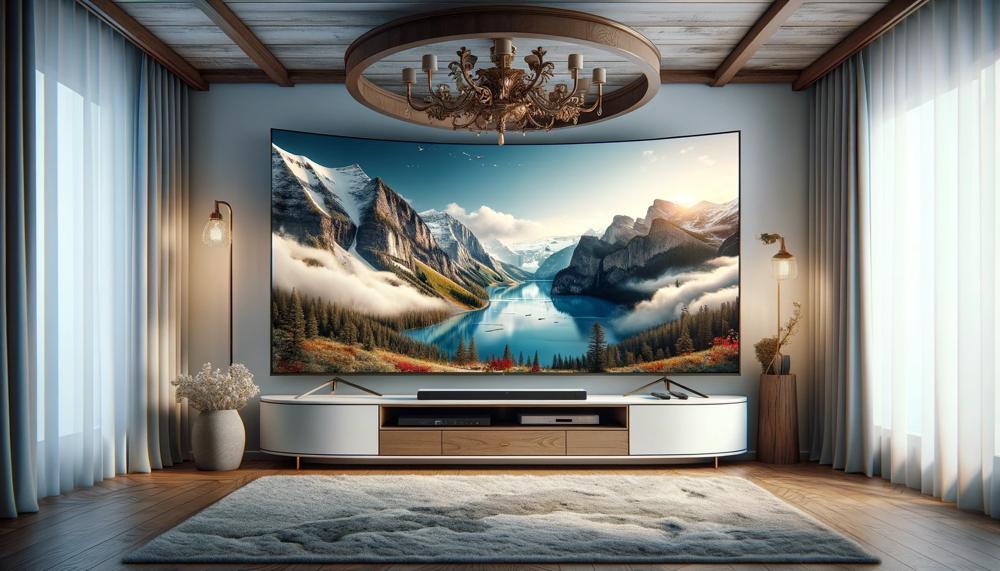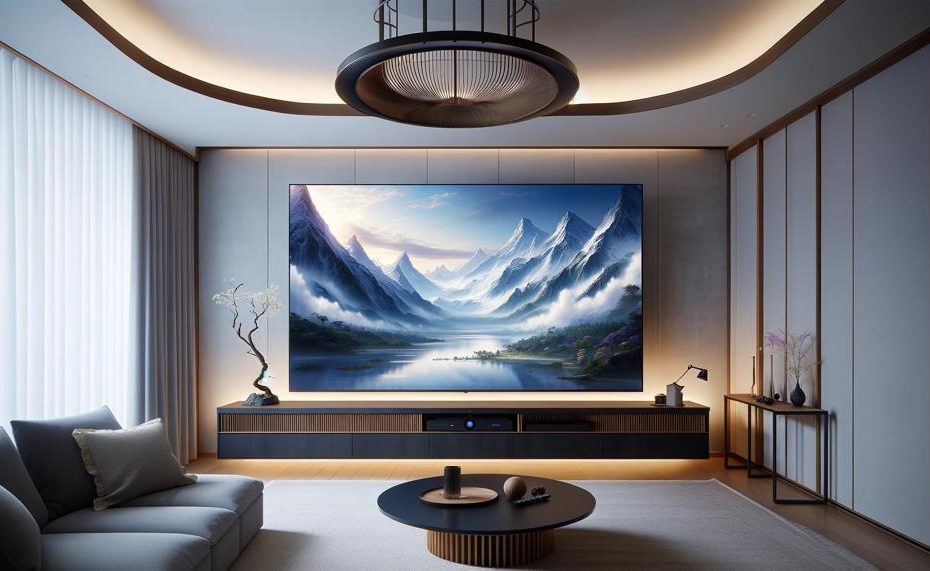In the modern quest for the perfect home setup, one question often arises and stirs surprisingly passionate debates: should your TV overhang its stand? It’s not just a matter of aesthetics; it’s about marrying form with function in the heart of your living space.
As we dive deep into this topic, we’ll peel back the layers of what makes a TV placement truly work for you. Our exploration will not just touch upon the visual harmony of your setup but also delve into practical implications, such as viewing angles, safety, and space optimization.
Key insights you’ll gain include:
- The Aesthetics vs. Function Debate: How does overhanging impact the overall look and feel of your room?
- Safety Concerns: What risks does an overhanging TV pose, and how can you mitigate them?
- Optimizing Viewing Experience: How does the position of your TV affect viewing angles and comfort?
- Space Utilization: Strategies for making the most out of limited space without compromising on style or safety.
Whether you’re setting up a new home theater or rethinking your current space, this post promises to guide you through making an informed decision that balances beauty, functionality, and safety. Let’s embark on this journey to creating a living space that doesn’t just look good but feels right as well.
Contents
Should Your TV Overhang The Stand?
The short answer is: No, your TV should not overhang the stand. The ideal placement for a TV on a stand is to have it centred directly on top of the stand, ensuring the edges of the TV align with the edges of the stand, or stay within its perimeter.
This approach guarantees stability, aesthetic harmony, and proper weight distribution, crucial for both the TV’s and stand’s durability.
Let’s delve into the nuances of achieving the perfect TV setup for home decorators and DIY enthusiasts.
Ideal TV Placement: A Detailed Guide
1. Stability and Safety:
Having the TV perfectly centred on the stand prevents the risk of it tipping over, which is essential for the safety of the household. An overhang could lead to accidents, especially in homes with children or pets.
2. Aesthetic Appeal:
A TV that sits flush with its stand contributes to a cleaner, more organized look in the room. This symmetry is pleasing to the eye and helps maintain a balance in the room’s decor.
3. Weight Distribution:
Properly centred TVs distribute their weight evenly across the stand, preventing undue strain on any part, which might weaken the structure over time.
4. Comfortable Viewing Experience:
Placing the TV at eye level from the main viewing area ensures a comfortable watching experience without neck strain. This consideration is as crucial as the TV’s horizontal positioning.
Table for Ideal TV Stand Dimensions Relative to TV Size:

| TV Size (in inches) | Stand Width (min) | Stand Depth (min) |
| 32 | 35 inches | 10-15cm more than TV depth |
| 50 | 53 inches | 10-15cm more than TV depth |
| 65 | 68 inches | 10-15cm more than TV depth |
Overhangs of a TV on a stand:
Overhangs of a TV on a stand:
To keep your telly safe and sound, and your viewing experience top-notch, a smidge of overhang on each side of the stand is all you need.
We’re talking about a modest two inches max – just enough to give it a bit of an edge without inviting trouble. Anything more and you’re asking for a bit of a wobble drama, which nobody wants. Here’s the lowdown:
| Aspect | Recommendation | Why It Matters |
| Overhang Amount | 2 inches (max 3 inches) | Keeps the set stable and reduces the risk of a topple. |
| Stand Stability | Non-negotiable | A sturdy base is crucial to prevent any accidents. |
| Centering the TV | Essential | Prevents imbalance and ensures a better viewing angle. |
| Distance from Wall | Measure specific | Ensures proper placement and centering for optimal viewing. |
| Stand Depth | 10-15cm longer than TV width | Provides enough surface area for the TV without excessive overhang. |
A quick measure before setting up can save you a world of hassle. Make sure the stand is a tad deeper than your TV’s width for that perfect balance. And remember, centering your TV ain’t just about aesthetics; it’s about keeping the telly from taking a dive.
Conclusion
In the realm of home decor and functionality, the placement of your TV relative to its stand is more than a trivial detail—it’s a foundational aspect of living space design that merits thoughtful consideration. The consensus leans towards a setup where the TV does not overhang the stand, ensuring stability, aesthetic harmony, and safe, enjoyable viewing experiences. This equilibrium between form and function fosters a living environment that is both visually pleasing and pragmatically sound.
A well-aligned TV and stand facilitate optimal weight distribution, minimizing the risk of accidents and enhancing the longevity of your furnishings. It also establishes a visual symmetry that contributes to the overall cohesion of your room’s design. From a practical standpoint, ensuring your TV is perfectly centered on its stand with minimal to no overhang is pivotal for preventing tipping hazards—particularly in dynamic households with pets or children.
Moreover, this careful alignment aids in optimizing viewing angles, ensuring that entertainment is not only a feast for the eyes but also a comfort for the body, avoiding unnecessary strain.





